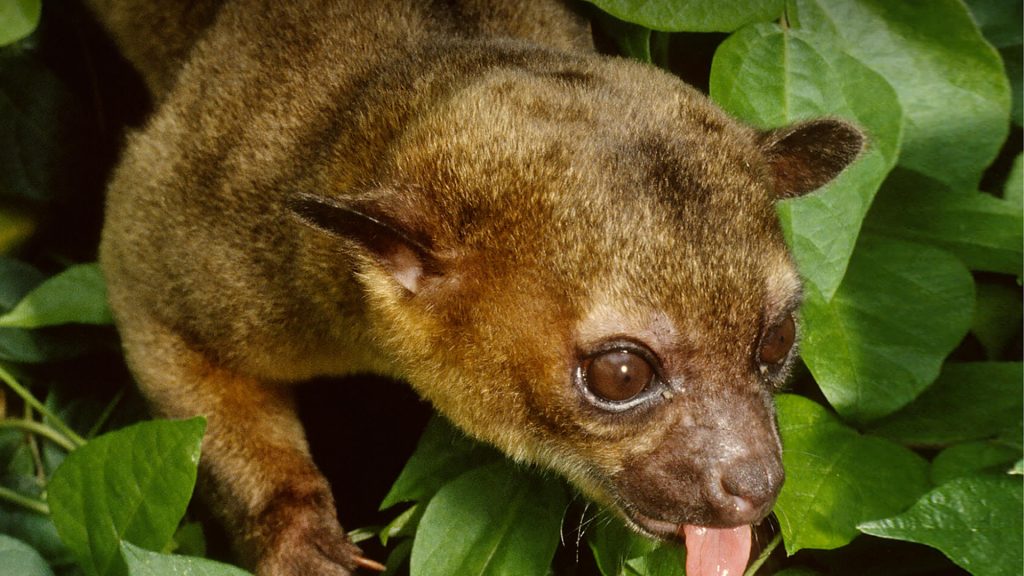Kinkajous are deliberate in their every movement, carefully placing all legs and the tail for the best balance. By rotating their hind ankles, kinkajous can climb down a tree’s trunk headfirst. This helps them make a quick escape from larger, tree-climbing predators such as jaguars, ocelots, and margays.
There is danger from above as well, in the form of harpy eagles. Kinkajous look for dark hideaways just before dawn, the magical hour for predation. If they are not well concealed by this time, a predator might surprise them during sleep.

Although kinkajous are classified as carnivores (they have canine teeth), most of their diet is fruit and nectar. On rare occasions they eat eggs, hatchlings, insects, and small vertebrates. Their 5-inch-long (13 centimeters) tongue can reach inside flowers or beehives for tasty honey or nectar.
Their short, dense fur provides a natural protection from bee stings. Their dexterous paws help them manipulate food. Kinkajous often hang by their tail while reaching for their next piece of fruit!
Scientists consider kinkajous to have a “solitary group-life.” This means an individual spends most of its time alone but may join others when feeding on fruiting trees. Individuals may also gather to socialize. They play, groom, and sometimes even sleep together.















